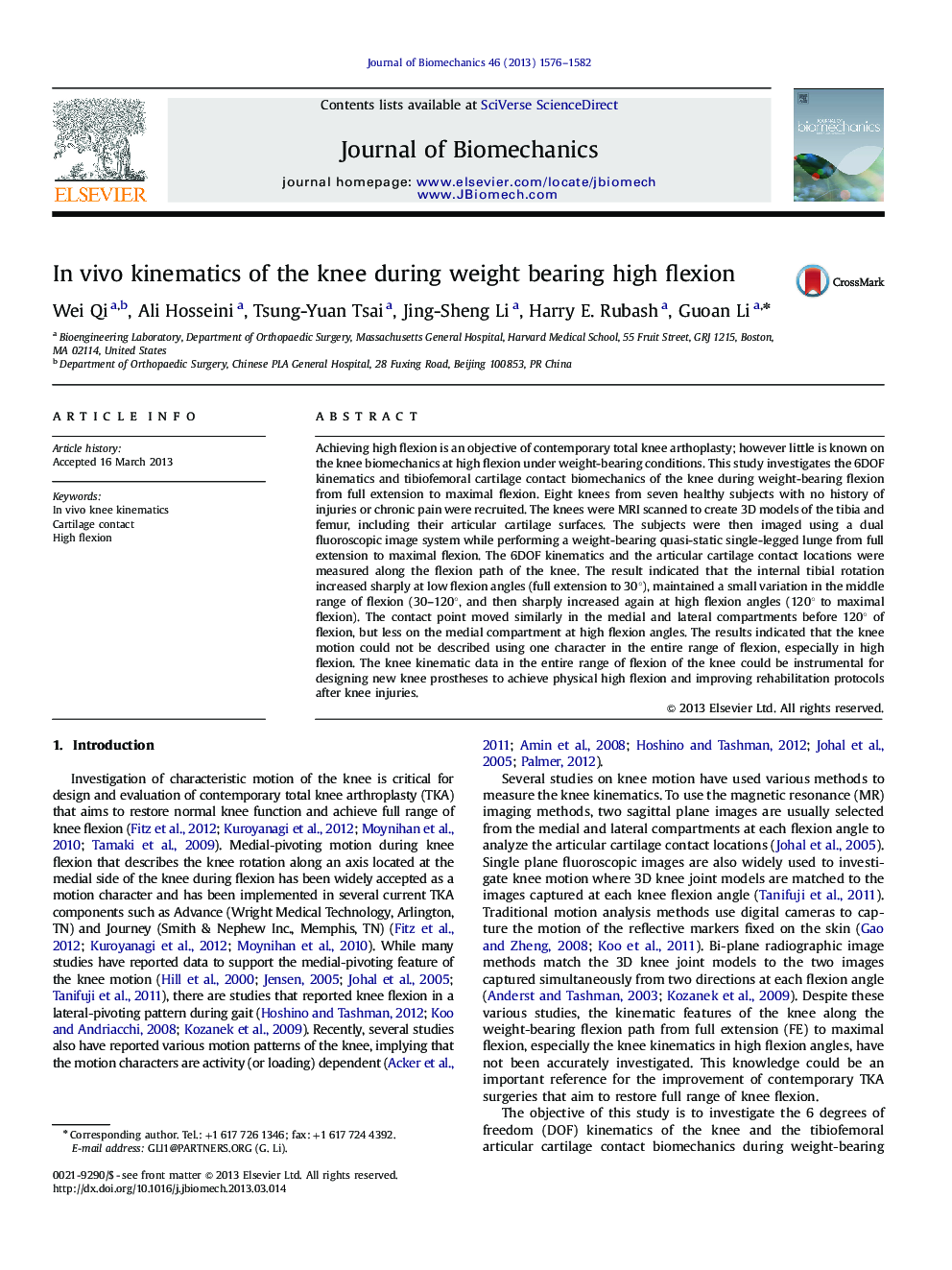| Article ID | Journal | Published Year | Pages | File Type |
|---|---|---|---|---|
| 872089 | Journal of Biomechanics | 2013 | 7 Pages |
Achieving high flexion is an objective of contemporary total knee arthoplasty; however little is known on the knee biomechanics at high flexion under weight-bearing conditions. This study investigates the 6DOF kinematics and tibiofemoral cartilage contact biomechanics of the knee during weight-bearing flexion from full extension to maximal flexion. Eight knees from seven healthy subjects with no history of injuries or chronic pain were recruited. The knees were MRI scanned to create 3D models of the tibia and femur, including their articular cartilage surfaces. The subjects were then imaged using a dual fluoroscopic image system while performing a weight-bearing quasi-static single-legged lunge from full extension to maximal flexion. The 6DOF kinematics and the articular cartilage contact locations were measured along the flexion path of the knee. The result indicated that the internal tibial rotation increased sharply at low flexion angles (full extension to 30°), maintained a small variation in the middle range of flexion (30–120°, and then sharply increased again at high flexion angles (120° to maximal flexion). The contact point moved similarly in the medial and lateral compartments before 120° of flexion, but less on the medial compartment at high flexion angles. The results indicated that the knee motion could not be described using one character in the entire range of flexion, especially in high flexion. The knee kinematic data in the entire range of flexion of the knee could be instrumental for designing new knee prostheses to achieve physical high flexion and improving rehabilitation protocols after knee injuries.
